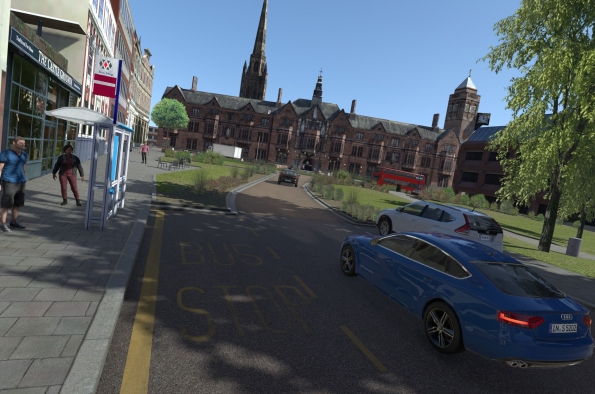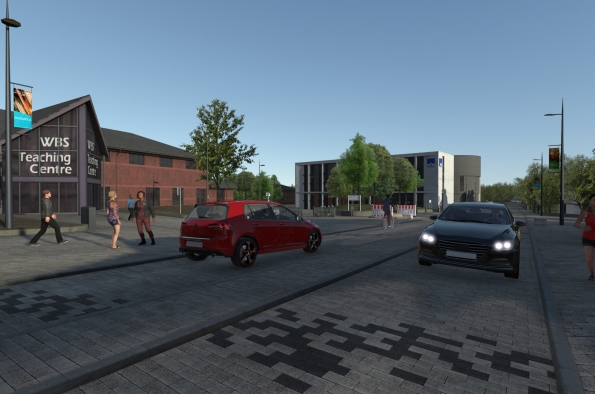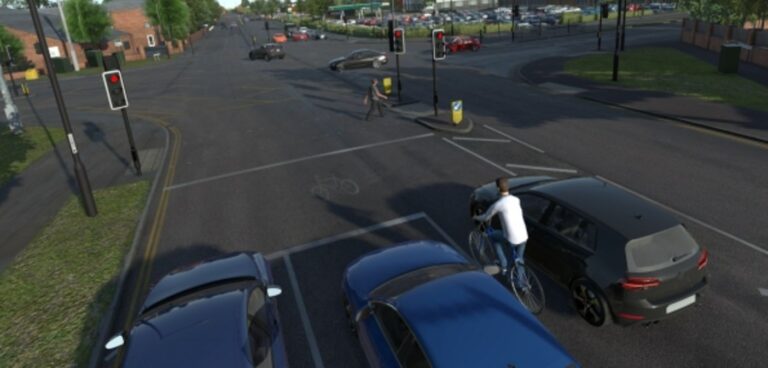A new digital twin of roads in Coventry will enable autonomous vehicle simulations to be validated on public roads in the UK for the first time.
The new collaboration between driving simulation software company rFpro and WMG, at the University of Warwick, will allow simulation to become a recognised part of the approval process for connected and autonomous vehicles (CAVs).
The team has created a digital twin of sections of the Midlands Future Mobility testbed, enabling the development of autonomous vehicles in simulation. WMG, alongside other Midlands Future Mobility partners, will provide testing and research support to allow customers to carry out effective real-world correlation.

Matt Daley, rFpro managing director, said: “You cannot feasibly validate autonomous vehicles in the real world alone, there simply isn’t enough time or money. We must also exploit the expandability of simulation.
“To do that we must trust the simulation results and so it is vital that we regularly check that they correlate with the real world. Our project with WMG enables the industry to do this on public roads for the first time in the UK.
“This is a big step towards the approval and adoption of autonomous vehicles.”
According to the partnership, there are three areas within the Midlands Future Mobility testbed that can be used to validate virtual test data on public roads – roads round the University of Warwick campus, an area of Coventry town centre and a section of Holyhead Road, which is one of the main roads in and out of Coventry. This network will provide a varied selection of roads that are common across the UK.

The route features geofenced CCTV, real-time kinematic corrected GPS and high-capacity wireless connectivity providing independently verified ground truth of real-world events. According to the team, this is critical for correlation.
Daley added: “We simulate, validate the results, exploit the simulation further, and then validate and exploit further again. Engineers have been using this technique for decades.
“For example, the first thing a Formula 1 team will do on a Monday after a race weekend is drive the simulator to verify that the simulated vehicle feel and data match the real vehicle feel and data. If the simulator correlates to the real world then they can quickly exploit the powers of their simulation before their next race. It is this same concept being used now to develop autonomous vehicles.”
WMG has upgraded its 3xD simulator, adopting rFpro’s software to improve the visualisation observed by the driver and the realism of the vehicle model. WMG said it will continually consider new emulation techniques for sensors and signals.
rFpro added that it is currently exploring phase two of the project, which would see the digital twins expanded to cover more of the testbed route.





